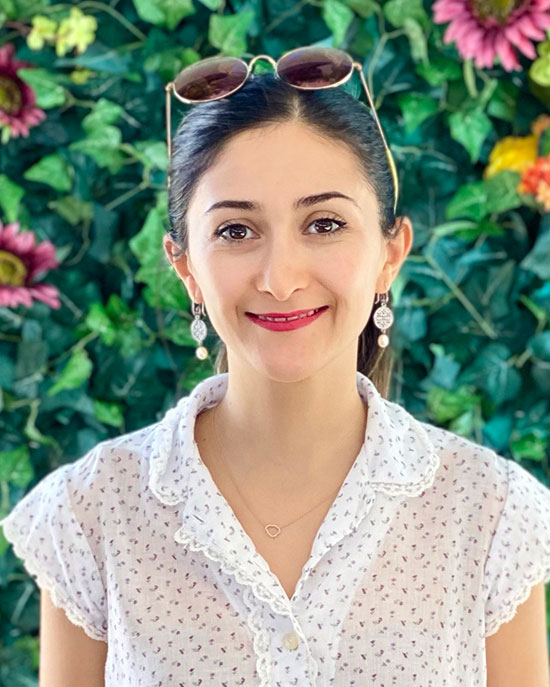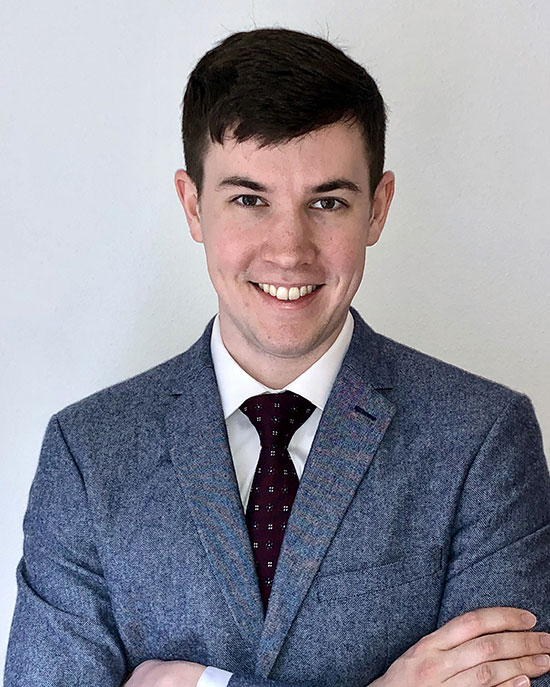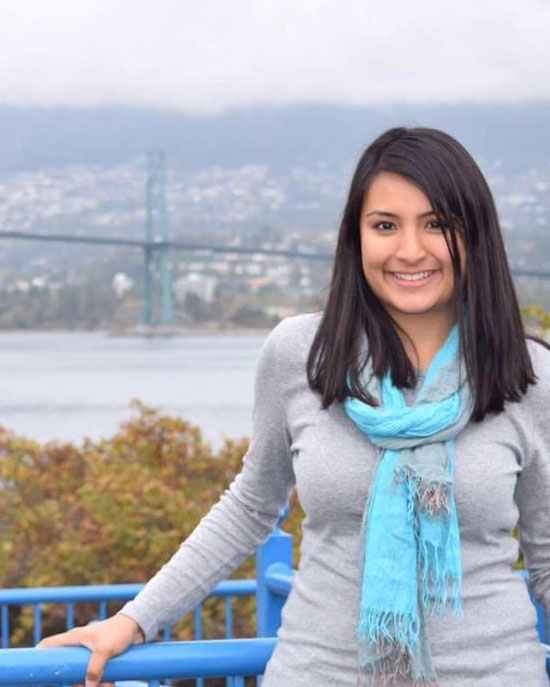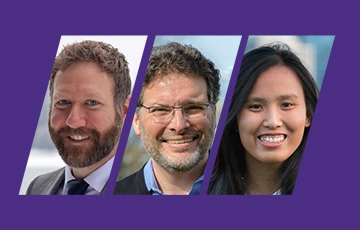What do mechanical engineers do in the world of tech? ME alumni at Microsoft, Amazon and Oracle share their career stories and advice.
With a campus situated only a few miles from an array of technology companies, including the headquarters of both Amazon and Microsoft, it isn’t surprising that many ME alumni go on to careers in the tech industry. But for these software-driven organizations, the roles and entry points for mechanical engineers aren’t always obvious. We recently spoke to three alumni working in tech.
Leila Asfari, Mechanical Engineer at Microsoft, Microsoft Surface Laptop Team
B.S., ’16

Leila Asfari
What do you do as a mechanical engineer at Microsoft?
When I tell people I’m a mechanical engineer at Microsoft, they often say, “What? Microsoft has mechanical engineers?” But when you bring up products like Surface and Xbox, our role becomes more obvious. All of the enclosures, controllers, buttons, and so on are designed and tested by mechanical engineers.
I work on the Surface Laptop team. The Surface Laptop Studio came out this past September and I’m super proud of it. I worked as an engineering lead on the cameras, the sensors for Windows Hello, the microphones, and the circuit board for the wifi and the antennas.
What was your path from UW to Microsoft?
When I finished my undergraduate degree, I accepted an offer from Hitachi Consulting even though I didn’t really know what being a consultant meant. It turned out to be an amazing way to learn project management, communications, how to work with clients and other skills I hadn’t learned in engineering classes. I also taught myself some programming and other software skills, but after a year or so I realized how much I missed working on hardware.
A friend of a friend worked at Microsoft, and he referred me to their Advanced Prototyping Center where I got hired as a contractor. They have a huge machine shop, all kinds of 3D printers and laser cutters and everything you could want for prototyping — it was like an ME’s dream. There I interacted with MEs from an array of different device teams and helped them with prototyping and testing.
After about a year and a half, I decided I wanted to get more into the design aspects and was able to get hired as a full-time engineer, where I am now.
Do you have any advice for ME students preparing for jobs in the tech industry?
Many of the skills I learned in ME like GD&T (geometric dimensioning and tolerancing) and CAD (computer-aided design) as well as the fundamentals in thermals and problem solving are all things I use in my current role.
On the other hand, I didn’t appreciate how important non-technical skills would be. In the professional world skills like communications, writing and public speaking are just as important to your success as the technical skills. I would tell engineering students to take those kinds of classes seriously, build your network and find opportunities to co-own projects so you learn to work collaboratively.
The other piece of advice I have is that you’ll most likely learn 90% of what you need on the job. Employers are looking for problem-solving skills, so don’t be afraid to apply to jobs and go in ready to learn.
Ken Latimer, Software Engineer at Oracle, Oracle Cloud Infrastructure
B.S. Mechatronics ’16, M.S. ’19

Ken Latimer
What is your role is at Oracle?
I work on Oracle’s cloud product, Oracle Cloud Infrastructure. It’s a service that offers lots of the standard cloud computing needs, and I work on a team called OKE, which stands for Oracle Kubernetes Engine.
Kubernetes is a system for orchestrating containers, or packaged applications, to run across different computers in the cloud. For example, if you have a Mac and your friend has a Linux computer, the program you’re trying to run may not work the same way on both systems. Containers solve this problem by bundling the application together with its dependencies to make sure everything runs like it’s supposed to.
How did you make the shift from ME to software?
I first picked ME because I wanted to know how cars work. I actually didn’t like programming at first. That started to change in mechatronics class when we tinkered with little Linux computers by writing code and watching it work in real life.
After I finished my undergraduate degree, I returned for my master’s to learn more about flight controls and mechatronics. I got involved with the Boeing Advanced Research Center (BARC) and for my master’s thesis built a small robot that inspected aircraft wings. From that project I learned more programming, plus it introduced me to people at Boeing and helped me get an internship there.
By the end of grad school, I had decided I wanted to work in software professionally. After I graduated, I took an online course in web development to fill in some gaps in my knowledge and then applied for software engineering jobs at Boeing, where I eventually got an offer to work on a flight test data systems team. We were working on systems that collect and process data from flight tests and I had the opportunity to work on a few different projects including a flight test data recorder and a full-stack web application. I got introduced to containers working with a software platform called Docker and that led me to my current role developing container features for OKE.
What tips would you give ME students considering a career in tech?
If you want to transition to software, be sure to develop an understanding of data structures and algorithms. So, for example, what is a linked list? What is a binary tree? How do you use those data structures to solve a problem?
My second piece of advice is to get programming experience any way that you can. I took some computer science electives, but there are also a ton of programming courses online. Consider taking on a passion project — if it’s something you really care about, you’ll put in the time to learn what you need to and take it to the finish.
It also helps to be involved in a club, lab or research center like BARC where you’ll be around graduate students and professors. It gives you experienced people you can absorb a lot from and ask for help. The structure of a collaborative project can motivate you to put in the time to learn.
Karen Harban, Research Scientist at Amazon, Amazon Prime Air
B.S. ’14, M.S. ’15, Ph.D. ’19

Karen Harban
Tell us about the work you do at Amazon.
I’m a research scientist on Amazon’s Prime Air team, where we’re working on an unmanned aerial vehicle system for package delivery. Our large group has lots of different business and engineering aspects working on how we can make custom deliveries by drone. My role is developing numerical models to assess structural integrity. That feeds design and manufacturing changes of the drone’s primary structures.
How did your experience in ME lead you to your job?
I first got involved in research during my senior year and ended up getting a funded research opportunity for my master’s degree. The research involved studying composites for aerospace applications with ME Professor Mark Tuttle and the Center of Excellence for Advanced Materials in Transport Aircraft Structures (AMTAS). It was my first exposure to the aerospace field.
When I finished my master’s I had another research opportunity through Professor Tuttle to work on my Ph.D. with Bridgestone. My dissertation was on structural analysis of discontinuous fiber composites and that translated well to what Amazon was looking for in structural engineering. In fact, my first role at Amazon as a product design engineer involved validating analysis with component and material test data, very similar to what I worked on in graduate school.
Eventually that evolved into my research scientist role with more focus on simulation and numerical analysis, which is what I’m most interested in.
What would you recommend to students thinking about getting a job at a big company like Amazon?
Find what you’re most excited about and really pursue that, whether it’s advancing academic pursuits or working in industry. Also, utilize the resources that the department offers, including faculty, staff and lab and shop resources.
In my experience tech companies especially look for critical thinking skills. While some of those are skills you’ll get in the classroom, many are easier to get from outside interests. Industry internship opportunities focused on research and academics are very valuable, so look for those internships early. They also give you a chance to get a feel for different kinds of jobs so you can decide what direction you want to go.
One of the benefits of a big company like Amazon is that there’s lots of opportunity to switch roles once you’re there. Some people gravitate toward information technology, some into business and others toward science, like I did. You don’t necessarily need to end up doing the same thing you start with.
Learn more
Learn more about UW ME alumni, industry partnerships or resources available for current students looking for jobs and internships.
Originally published February 22, 2022
